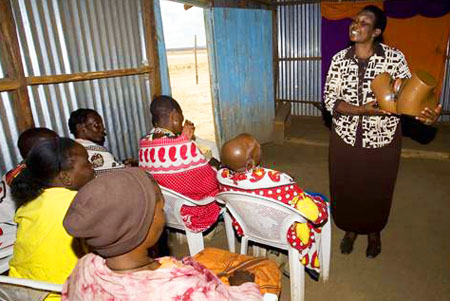
In the last few decades, tireless efforts by activists around the world to end female genital mutilation (FGM) have slowly but surely borne fruit.
The recent United Nations Global Ban, an African-led resolution calling on all member states to criminalize FGM, signals the aspiration for international consensus on ending FGM at the highest level. This was preceded by the Protocol on the Rights of Women in Africa, a regional treaty currently ratified by 36 African States that calls for governments to ban FGM. Nineteen out of 28 countries in Africa where FGM is practiced have banned it in addition to South Africa and Zimbabwe. Laws against the practice also exist in at least 12 countries with immigrant populations from countries that practice FGM. Very recently, the United States passed a federal law making it illegal for girls to be taken out of the United States for the purpose of performing FGM. Funding for efforts to end FGM has also increased--from less than one percent of UNICEF's budget in 1993, when Equality Now started a campaign calling on UN agencies to address this serious violation of human rights--to millions of dollars today.
While recognition of FGM as a violation of human rights at the highest levels is a big step in the right direction, much more is needed to make positive change in the lives of girls. At least three million girls continue to be at risk of undergoing FGM every year in Africa alone.
To make lasting change for girls, first, governments need the political will to match their words with action. Enactment of laws against FGM is only the first step. Too many governments are failing to properly implement their laws or to educate their citizens about the laws. Kenya's lack of enforcement of its anti-FGM law led to the death of 12 year old Sasiano, a Maasai girl who bled to death as a result of FGM in 2008. It was only due to persistent advocacy from Kenyan organization the Tasaru Ntomonok Initiative and Equality Now that law enforcement pursued the case. On April 1, 2010, the accused--the circumciser and Sasiano's father--both pleaded guilty to manslaughter and were sentenced to ten years' imprisonment each. Similarly, the government of Niger has failed to follow the minimum sentencing requirements in its FGM law, and in several cases, perpetrators have been let off with a suspended sentence, sending the message that FGM will be tolerated.
Second, the efforts of grassroots activists fighting against FGM must be supported. Activists know the change that is needed within their communities and the ways to achieve the change. Agnes Pareyio, who heads the Tasaru Ntomonok Initiative, Equality Now's partner in Kenya, campaigns widely against FGM in the Maasai community and has established a safe house for girls that run away from home to avoid FGM. Agnes was forced to undergo circumcision as a girl in Kenya and resolved that she would not let her daughters go through the same experience. She supports the implementation of the anti-FGM law, including through training local police and other community leaders.

The Tasaru Ntomonok Initiative, an Equality Now partner, leading an anti-FGM workshop with Maasai women, including circumcisers, in Kenya.
There is a dangerous trend, including among international organizations, towards cultural relativism that threatens to impede true activism against FGM as human rights violation. In 2010, the American Association of Pediatrics (AAP) issued a policy statement on FGM that appeared to endorse a ritual nicking of the clitoris by pediatricians to satisfy "cultural" requirements of parents and reversed the AAP's previous unconditional condemnation of this harmful practice. It was only through concerted pressure by Equality Now and our partners that the AAP reversed its policy position.
Third, efforts to end FGM must be rooted in the recognition that FGM arises due to gender inequality and the lower status of women in society. As such, anti-FGM efforts must include work to create equality between men and women, girls and boys. Efforts to medicalize FGM in order make it safer, as seen recently in Indonesia, show a lack of understanding of the complexity of the issue and its ties to gender inequality.
Lastly, and most importantly, greater donor resources have to be committed to the work to end FGM and a major share of these resources must be invested in those at risk--adolescent girls. To help prevent FGM, there must be investment in building the assets of girls, so that they themselves become agents of change.
On this International Day of Zero Tolerance to FGM, we must stand steadfast in our collective duty to make ending FGM a reality for girls who continue to be at risk. We have reached key agreements both at the international and African regional levels. We must now work on making sure that these agreements influence the lives of girls, so that no girl is subjected to this practice and FGM becomes something to be read about in history books.
